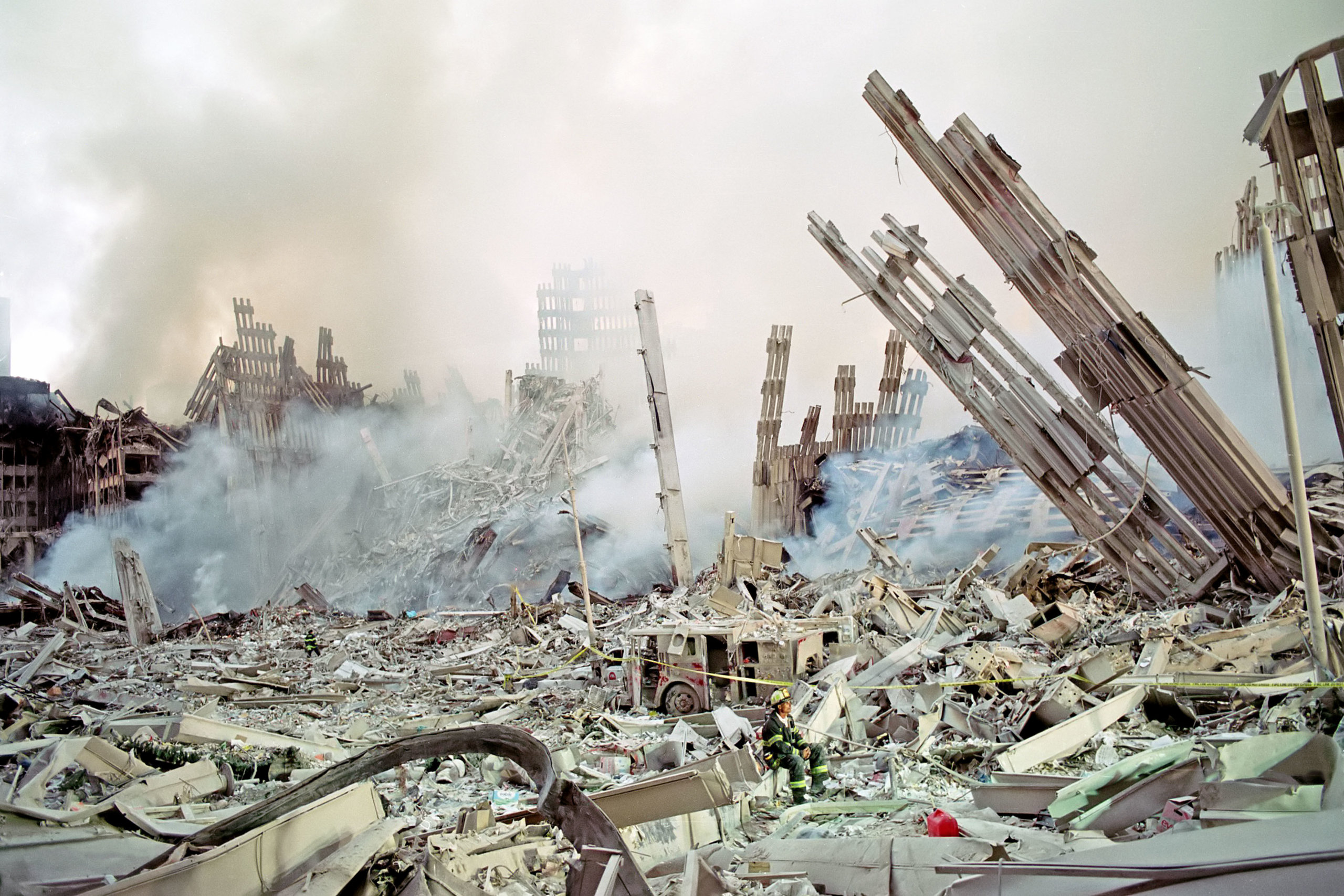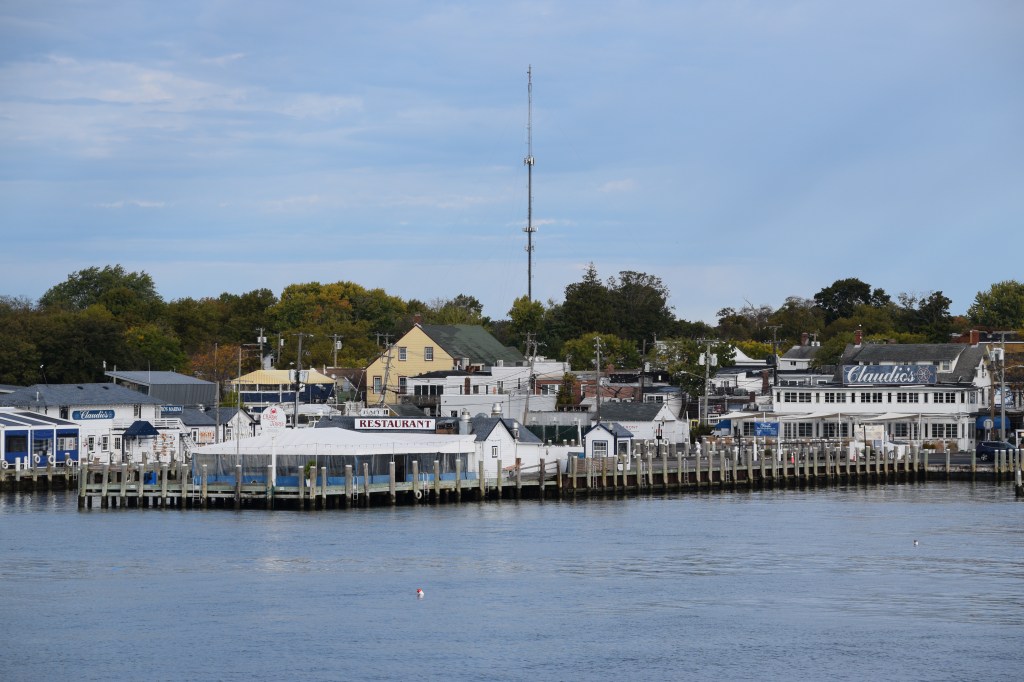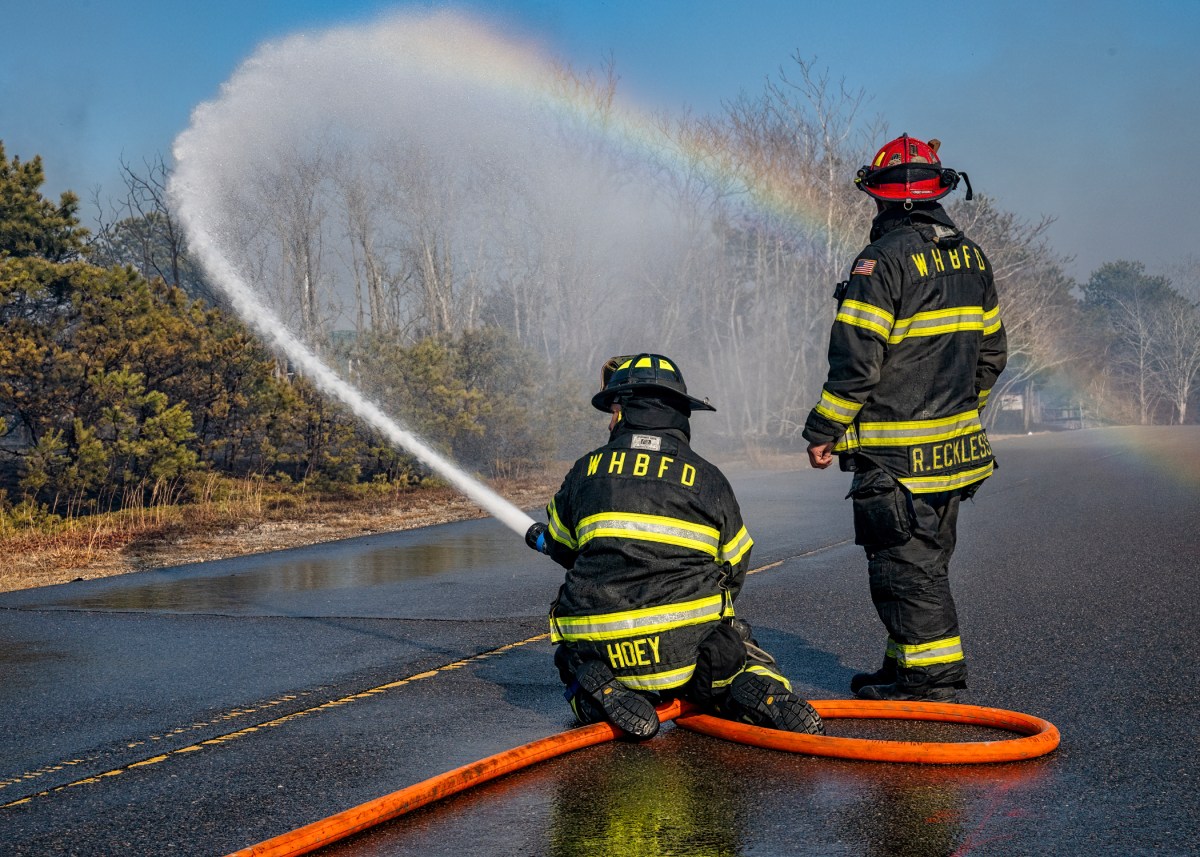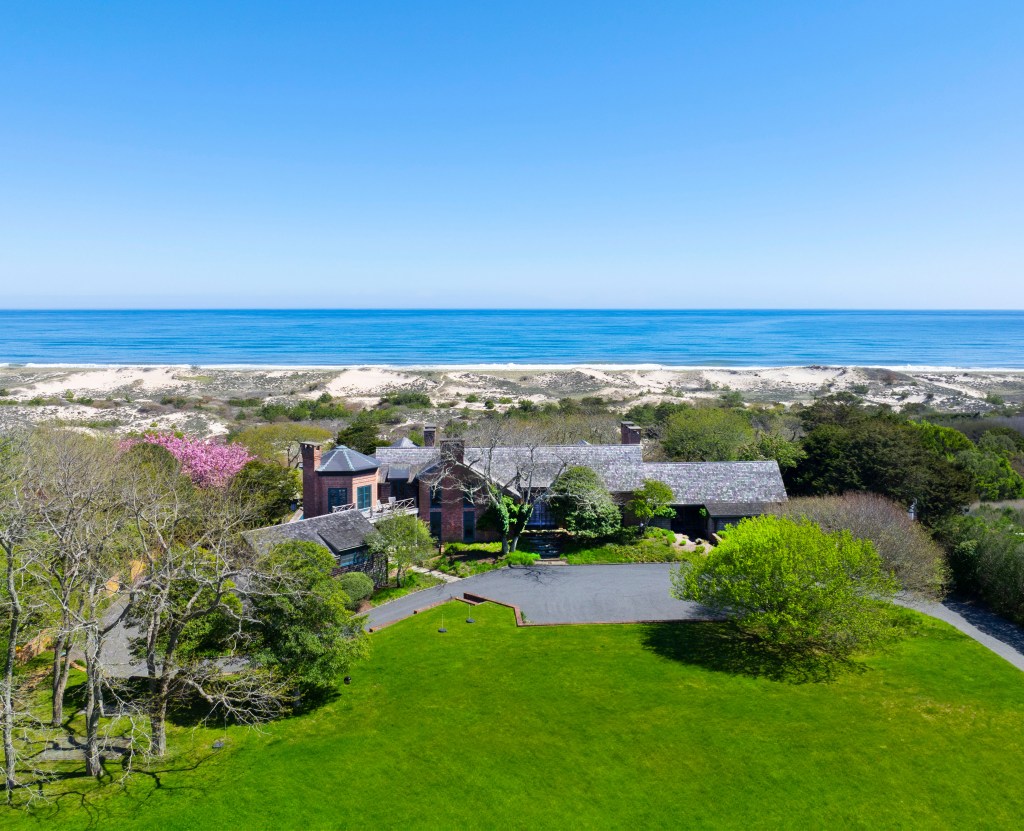East Hampton First Responders Were at the Ready After September 11 Attacks

On the morning of September 11, 2001, Gary Zay was teaching eighth grade at the East Hampton Middle School when the first plane hit the World Trade Center. He watched on television with his students as the terrorist attack continued.
A volunteer firefighter with the East Hampton Fire Department, he knew what the New York Fire Department was up against and that they would do everything in their power to rescue the men and women trapped in the buildings. He told them about one of his instructors, Ray Meisenheimer, a New York City firefighter with Rescue 3.
“I told them, ‘They are not going to come out unless ordered to do so,’” he recalled. “When the building collapsed, I felt that Ray was gone.”
The guidance counselor eventually made them turn the television off.
“When it first happened, I remember asking the superintendent … if we would be allowed to go in, and she said, ‘Of course,’” said Zay, then a member of East Hampton’s confined space team. “Within a day or so we realized it was not going to be a rescue.”
Even still, firefighters and police officers from departments across Long Island, including those on the East End, volunteered to help in the days and weeks after the terrorist attacks.
East Hampton Fire Department was among those that answered the call that had gone out for emergency lighting. Zay was on the fire police truck that responded on September 14.
After mustering with other departments at the Park and Ride in Huntington, off the Expressway, “we traveled with a convoy of different departments for Long Island,” he explained.
East Hampton’s truck was placed at the intersection of Wall Street and Water Street and provided lights until the morning of September 15.
“Throughout the night, different FDNY personnel would walk by and recognize East Hampton,” he said. “They either stated they vacationed out there or were working out there in the summertime.”
Around 2 a.m., an FDNY member asked the East Hampton crew if they wanted to go right up to the site. “We walked over and my memory of that is — if there was hell on earth — that is what it would look like,” Zay said.
***
Michael Heller, an East Hampton-based photographer and volunteer firefighter, got the closest to Ground Zero of the local responders when he was called in by state officials to document the aftermath.
Heller woke up on the morning of September 11 to a phone call from Getty Images, as he owned a stock photography agency called 911 Pictures that also represented 100 photographers from around the world who specialized in public safety photography.
“They said, ‘Do you have anybody down there?’” he recalled.
Heller didn’t know what was going on yet. He turned on the news. The first plane had hit the first tower. He watched, along with the rest of the world, as the second plane struck, as the Pentagon was attacked, as the towers went down and as the fourth hijacked plane went down in Shanksville, Pennsylvania.
He received a call from the New York State Office of Fire Prevention and Control in Albany, which he had done some photography work for in the past. State Fire Administrator Jim Burns asked him to respond to photograph the rescue efforts. Burns faxed him a letter that would allow him to get past checkpoints and closed roads and grant him access to the scene.
The LIE was deserted — eerily so. He doesn’t recall seeing a single car. With his blue courtesy light on, he was waved through at the checkpoints, until he got to Ground Zero. He arrived late on the evening of September 11 and was embedded with the New York State Search and Rescue Team, though they had not been mobilized yet.
Still, he thought, “I better start documenting.”
As a firefighter, he was trained to do a size-up of the scene, and he began by skirting around the perimeter with his Nikon N90 in hand and a respirator mask on his face. At every turn, he thought, “Oh my god.”
To his knowledge, he is the only photographer who got pictures of the work being done that night.
“I was just as overwhelmed as anyone,” he recalled. “It was like you have your reality set and this in front of you doesn’t jive with the reality … it’s almost too big to take in at once.”
“At the same time I knew I had a job to do. I was trying to think with a photographer’s eye — what would make a nice composition, dramatic lighting.” He said he “was trying to have an objective photographic eye while I’m being amazed at the same time.”
Heller was still shooting with film at the time. “I had a set number of rolls of film, I think it was 13 rolls,” he said. “I had to think very carefully about what I was going to shoot and ration film.”
The photo that stands out the most was one he took the next morning. A battalion chief guarding the scene was sitting amid the rubble with the remains of the north tower behind him, as the sun coming up shone through the jagged pieces of steel sticking up. It would win an international photography award.
Heller had spent many years riding along and documenting the FDNY and had ridden on Rescue 1, one of the specialized rescue units that lost half of its company on 9/11. He was also a member of the Fire Bell Club of New York, an international fire buffs association and had made friends with many city firemen.
“One of the things that struck me was when I saw Ladder 3 from the Lower East Side of Manhattan completely smashed under the walkway,” he said of the destroyed truck that now sits in the 9/11 Memorial Museum.
After 18 hours, he was out of film, having taken 200 to 300 exposures. “I’m honored I was able to do it,” he said of his time at Ground Zero. “You kind of knew at the time it was a huge thing. It felt like a privilege to be there.”
Heller said it took him some time to process what he saw. “It was beyond the scope of reality.”
***
Gerard Turza Jr., now the chief of the East Hampton Fire Department, was an assistant chief in the Bridgehampton Fire Department on September 11. “It was 100 miles away but it had a ripple effect,” he remembered.
Within a few hours, volunteer fire departments were readying to help. Bridgehampton had just gotten a new ambulance, but still had possession of the old ambulance it was replacing. They got a call from Southampton Hospital about the possibility of helping to move patients out to make room for the wave of patients they expected from the west as survivors would be pulled from the rubble.
“There’s got to be tens of thousands of wounded, and they’ve got to go somewhere,” Turza said of the provisions being made. “Logically, it made sense to shuffle everybody out to the east.
“Unfortunately that phone call never came,” Turza said. “It was pretty sobering.”
Only 20 survivors were pulled from the rubble.
“We had never seen anything on that scale before,” he said. “Everybody wanted to go and help. The firehouse was packed. Every member of the fire department in Bridgehampton was at the firehouse. Everybody was itching, ‘Let’s go in.’”
They had crews at the ready. Suffolk County asked Bridgehampton to decontaminate its tanker truck so it could be utilized to bring in potable drinking water since water mains were severed. The department also put aside old sets of HURST tools (hydraulic rescue tools) and old turnout coats.
“We’ve got a plan and it makes sense, we’re going to do our part out here. Next thing you know, those calls didn’t come,” he said.
A lot of city firemen had strong ties to the local fire services. Meisenheimer, for instance, was in charge of curriculum at the Suffolk Fire Academy, where all volunteer firefighters in the county are trained.
“He was entrenched with us out here. You talk to all the senior firefighters, he was the guy. He is responsible for shaping our local hazmat response — a tremendous rescue instructor,” Turza said of the 46-year-old from Central Islip. They had just spoken on Friday about an upcoming training on elevator rescue. Turza knew he was working in the city because he said he would call Wednesday morning when he was off duty.
That call never came either.
Peter C. Martin, a lieutenant in Rescue 2 who lived in Miller Place, was also a Suffolk County Fire Academy instructor. He was 43 and a 22-year veteran who had assisted with the search and rescue operation in Oklahoma City after the bombing of the federal building.
“We knew these guys,” Turza said. “This wasn’t something far away on the West Coast where we didn’t know anybody.”
Turza attended five funerals.
***
Todd Sarris was the East Hampton Town Police Department’s chief at the time, in the position for only about one year. He was off that day when he got a call from his captain with the news. He went into headquarters and it wasn’t long before his officers indicated they wanted to go into the city to help.
The chief admits at first he was reluctant to send officers for whose lives he was responsible. The city was in chaos. He was worried about another attack, about his own officers getting hurt. “Ultimately, I relented. They were so committed to wanting to go in there.”
For three weeks, 32 officers — from patrol officers to captains, members of the East Hampton Town Marine Patrol included — rotated in and out of the city, Sarris said. In groups of nine to 11, they worked long shifts — 16 to 24 hours, not including the commute, the officers involved recalled.
“The amazing thing about it,” Sarris remembered. “I told the guys, ‘I can’t guarantee you are going to get paid for this.’ They didn’t care. They wanted to go. I was never any more proud than I was that day.”
The federal government ended up paying the overtime costs for their assistance.
East Hampton police sent multiple groups into the city to assist over the next week or so, until the NYPD sent word outside agencies were no longer needed.
East Hampton Town Police Chief Michael Sarlo, then a patrolman, was part of the second group that went in from the East Hampton Town and Village Emergency Services Unit.
“It was all quite surreal, from the quiet, almost empty roadways on the drive in, and the moment we crested an elevated portion of the LIE in Queens where you would normally see the twin towers on the skyline, but there was just this cloud of dust hanging in the air where the towers used to stand,” Sarlo recalled.
Assisting agencies that responded reported to a command center that had been set up at the Jacob K. Javits Convention Center, where they would receive instructions.
“We were assigned to an overnight shift at the United Nations headquarters security detail, to assist the NYPD in securing the First Avenue area,” Sarlo remembered. “As you can imagine the UN building was a high security priority and the entire area was completely locked down.”
The East Hampton officers paired up with NYPD officers, who were working 12 to 18 hour shifts, and gave them some relief from their posts, Sarlo explained.
“With NYPD helicopters and air force fighter jets flying routine routes overhead, military vehicles cruising the streets and no civilian foot or vehicle traffic, it was quite surreal,” he said. “It felt like a scene from a sci-fi movie, yet the stark reality of the horrific tragedy and so many unanswered questions still lingering, made the entire experience something none of us will ever forget.”
As Sarlo’s unit made its way through a light over on the East Side, they were waved down by NYPD Officer Aquin Medler, an East Hampton native.
“‘What are you guys doing in here from East Hampton?’” Sarlo remembered him saying. “He was surprised to see us, but thanked us for the help. It was another surreal moment.”
Sarlo’s group did make its way down to Ground Zero, where they offered assistance at the mobile command post there.
“We caught a glimpse of the entire site, and while we were diverted to another area, just the few minutes we spent there left a lasting image in my mind,” he said. “St. Paul’s Chapel off Vesey Street, just a block away from the towers, had this old wrought iron fencing around its grounds. As we walked by I remember looking down and seeing debris piled up against the fencing, filling up parts of the courtyard. I looked closer and I could see, fully intact, stacks of papers, business records, financial statements and such … some in almost perfect condition as if they had been placed there, while others were smoldering and shredded. My wife and I lost a close family friend who worked in the towers, and it made this a very difficult image to process.”
As they left the city, “We were physically tired, emotionally drained and as we made our way back to East Hampton there was not much discussion,” Sarlo said. “We spent about 26 hours round trip, just gave our fellow officers from NYPD some help — a little break in what would be long-term duties getting through the recovery and clean up of the city.”
Sarlo said it’s hard to believe it’s been 20 years since the attacks — the images remain so fresh.
“None of the victims should ever be forgotten,” he said. “The brave men and women of law enforcement and the FDNY should never, ever be forgotten for the selfless service they performed, running into danger and putting their lives at risk to save others.”
Eddie Ecker, another town police officer who responded, recalled doing traffic control down near a makeshift morgue and being stationed at the outer perimeter at the United Nations when President George W. Bush arrived in Manhattan.
“There was such a feeling of anger — and unity. It was a whole range of emotions throughout the whole country, so you can imagine what it was like in the city,” Ecker said.
The then-detective lieutenant (who would later succeed Sarris as chief after his retirement) also got a chance to go down to Ground Zero and witness the work being done on what was known as “the pile.” The firemen and police there were proud of the work they were doing, not realizing the health effects that would affect so many of them in the two decades to come.
“I’m proud of it and I’m in awe of it,” Ecker said.
A supervisor went in with each group and the chief conducted an interview with each upon their return to make sure things went well and everyone was okay. Sarris said the report back was: “They were treated like kings. The city couldn’t have been more appreciative. It was really a time when law enforcement came together.”
While the East Hampton officers were kept off the pile, Sarris knew most got an opportunity to visit Ground Zero.
“That just devastated them. I think that’s what kind of set them back on their heels,” he remembered.
He was proud of how his officers handled themselves “with the most professionalism,” he said. “It will be one of those things I will never forget.”
***
Within about a week of the September 11 terrorist attacks, the Bridgehampton Fire Department held a memorial service for the victims.
“Every truck was out on the apron, at the edge, the apparatus room was filled and it spilled out onto the ramp as well,” Turza said. “We had over 500 people there, easily.”
The memorial was the first one held by a fire service on the South Fork. The East Hampton Town Chiefs Association began holding an annual service on the anniversary. While there was talk several times over the last 20 years to only hold them on milestone anniversaries,” said Turza, who once served as the association’s president, the association continued on. “When it happened, the mantra was to never forget. So if you’re not doing it every year, you’re forgetting. It doesn’t do any of those people justice to forget the event and sacrifices.”



